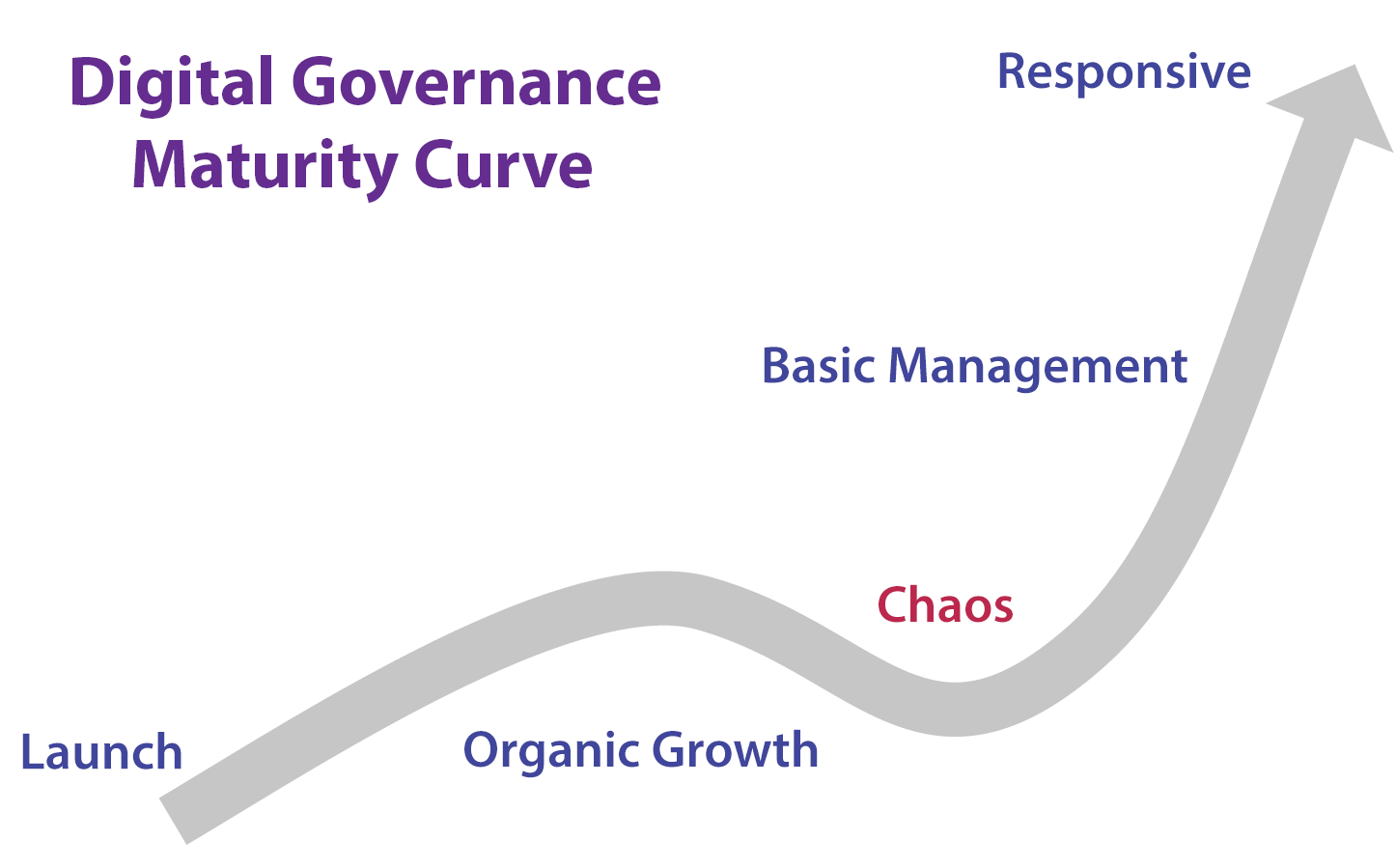The Role of Your Core Digital Team

The core digital team’s job is to conceptualize, architect, and oversee the full organizational digital presence. In most organizations, the core digital team is the set of resources you most likely called the “web team.” In an environment where digital governance is immature, this team often has de facto authority over digital standards—that is, until a powerful stakeholder disagrees with them. Often, they are in either marketing/communications or your IT department. But technically speaking, the team can be anywhere in the organization. The responsibilities of the core team can be distilled into two functions: program management and product management.
Program Management
Program management is responsible for the administrative side of digital. The core team program management’s function is to enable the digital process by ensuring that the digital team is properly resourced, which includes the management of staff, vendors, and capital expenditures. Core digital team program management resources are an important and often missing link between hands-on digital workers and the rest of the organization. Program management resources offer jargon-free, quantitative, and qualitative evidence to leadership in order to garner fiscal and strategic support for the growing resource needs of the digital team. Ideally, an organization’s core digital program management function would be staffed by individuals who have a firm understanding of the capacity and capabilities of digital and who also have management expertise. In organizations that have a stand-alone digital team with communications, digital, and IT resources, this role could be filled by a director or vice president of digital. Or, if much of the core team functions reside in the IT department, the program management could rest with the office of the CIO or some other senior IT manager.
Unfortunately, digital program management responsibilities are sometimes minimized or dismissed by digital leads that come from a hands-on digital development background. They focus the core digital team on production, possibly jumping in and playing a hands-on role themselves while pushing aside practical management tasks. The result of this hyper-focus on production means that the digital team staff often suffers from a lack of professional development. Many Web managers and digital directors have only worked in digital and are unaware of tried-and-true human resource management tactics that could support and grow their staff.
Product Management
Product management is responsible for ensuring that the organization’s entire digital system works coherently on many different levels. That includes technology platforms and content strategy, but also the “meta” aspects of development that give digital its power, like information architecture and taxonomy. This diversity of missions means that the core digital product management teams serve as a digital domain expert, a service provider, an integrator, and a business analyst—all at the same time. The product management arm of the core team is often responsible for defining digital standards and providing domain expertise in the definition of policy. They are also responsible for implementing strategies and technologies to support the measurement of digital effectiveness. Resources on this team help define the specific metrics and implement the processes and technologies for digital effectiveness measurement. They are also responsible for ensuring that shared aspects of digital are effectively managed and that other people in the organization who need to use those systems are properly trained to do so.
Ideally, the core team should not be scattered across multiple aspects of the organization due to its foundational role. However, in practice, this is often not the case. In any organization, the core digital team is bifurcated—with one main branch in the IT department and the other main branch in marketing, communications, or public relations. The reasons for this common split are obvious: a digital presence is a content-rich communications-focused series of channels that exist on a technology platform. Sometimes, on organizations with a transactional focus, the split can be two-or three-fold with other key stake holder’s organizations playing a strong core role.
Organizations should make an effort to overcome these legacy patterns and integrate digital resources on one team.
From Lisa Welchman, “The Basics of Digital Governance” in Managing Chaos: Digital Governance by Design (New York: Rosenfield Media, 2015), 33-36.





